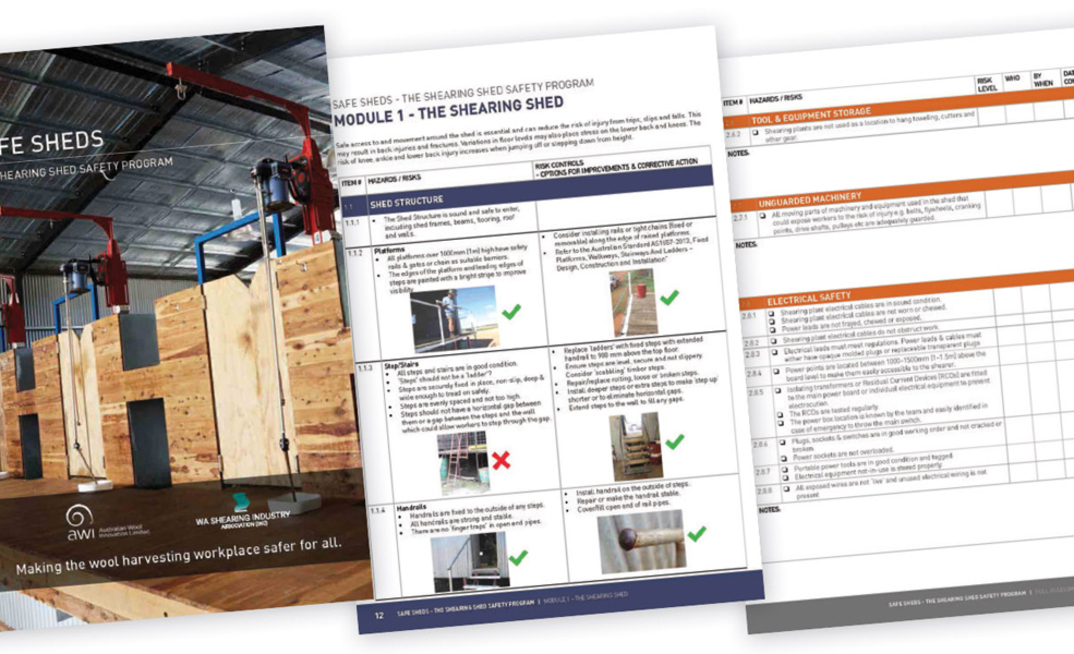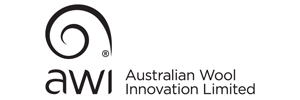The strong team culture within a well-run shearing shed is one of the many reasons people love the wool industry. A bright future for the wool industry also depends on training, better technology and infrastructure upgrades. Australian Wool Innovation (AWI) is working with industry to ensure a professional industry has a well-trained and educated workforce with a safe and best-practice work environment.
AWI shearing shed safety
AWI and the WA Shearing Industry Association (WASIA) recently launched SafeSheds, The Shearing Shed Safety Program. It is a national best practice guide and assessment resource; it aims to improve workplace conditions by making them safer for all and allowing woolgrowers and shearing contractors to identify safety hazards or improvements in sheds. By planning and documenting improvements, this allows woolgrowers to keep better records of their efforts in managing risks and safety in their workplaces.
Designed by people who know their way around a shearing shed, it is user-friendly and the program partners with mobile inspection tool, iAuditor by SafetyCulture to provide checklists in a mobile, digital, interactive format.
For further information and to find the program go to www.wool.com/safe-sheds and hard copies can be ordered via the AWI Helpline 1800 070 099.
AWI shearer and woolhandler training
AWI delivers a range of shearer and woolhandler training programs. Working with industry and 72 accredited AWI trainers and Registered Training Organisations, training is delivered nationally through workshops and with in-shed training for novice, entry level or improver shearer and wool handlers.
Attendees have reported shearing with more ease and of a higher quality after the training. A key focus of AWI training is to ensure career longevity and quality wool preparation. Proper grinding techniques for combs and cutters, looking after their plant and how to care for themselves and the welfare of sheep are also key areas of training.
AWI's in-shed training is freely available; contractors and woolgrowers are encouraged to call 1800SHEARS if they believe their novice or improver shearer or woolhandler staff would benefit from training in a working shearing shed.
For further information on AWI's shearer and woolhandler training program or to find a comprehensive suite of existing online training materials go to www.wool.com/training-resources.
AWI shearing shed design
The flow of sheep, people and wool is vital when designing or retrofitting shearing sheds. Ensuring worker safety, animal welfare and the quality of wool preparation is also crucial. The AWI shed design project gave experienced shed staff, shearers and woolgrowers the opportunity for design input using their vast knowledge and experience.
Since the first shed was built off the designs and subsequent open days, several shearing sheds have been built across the country using the designs.
The freely available technical engineering drawings and floor plans with design feature explanations and retrofitted shearing shed case studies can be found at www.wool.com/sheddesign.
Key features in this design include: an almost straight drag to the workstation (reducing twisting), low catching pen doors (minimising impact), moveable downtube positions towards and away from the chute (helping to ensure the front feet of the sheep fall into the chute when finished) and finally, a wide (800mm) and recessed (200mm) chute, with a lower leading edge (150mm) below the board, not protruding as a hazard into the catching pen.
Continued wool harvesting innovation
Recent AWI research with the University of Melbourne examined the primary contributors to shearing injuries. By placing a range of motion and muscle fatigue sensors on shearers, information and correlations on shearers' movements and corresponding fatigue levels have become much better understood.
Shearers are most likely to be injured in the last run of the day, with back injuries contributing 50 per cent of shearing injury costs due to longer rehabilitation.
This recent research has found that while injuries often happen during the catch and drag process, the cause often lies in the shearing process itself. The forces typically encountered during catch and drag are usually well within the capability of a typical shearer's body to withstand. However, it is the stooping posture during shearing that creates muscle fatigue during shearing. This stretch or ‘slack' in the lower back muscles affects its ability to stabilise and hold the spine and trunk, increasing the injury risk when performing the catch and drag.
Muscle fatigue and motion sensor technology could be used to measure the effectiveness of future physical intervention in the shearing process such as ergonomic shed design or to inform work rest-cycles and muscle development and stretching programs. It could also result in a more active solution such as an electromechanical version of the shearing harness, or even an exoskeleton that the shearer could wear providing physical assistance.
All of this research and development is vital to making shearing easier and every improvement that can be made is a win for shearers and the wool industry overall.
More information:
www.wool.com
ABOUT THIS COMPANY
Australian Wool Innovation
Our mission is to make strategically targeted investments to enhance the profitability, international competitiveness and sustainability of the Australian wool industry.
HEAD OFFICE:
- Level 6, 68 Harrington Street, The Rocks, Sydney, NSW, 2001, Australia
- Phone: 282953100
- Website: www.wool.com
- Email: feedback@wool.com

























